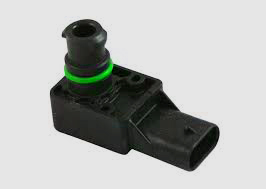“Breathing Easy: The Crucial Role of Emissions Control in Our World.” – 2023
How can Map Sensors contribute to fuel economy and emissions control?
Fuel financial system and emissions manipulate are two of the most critical elements when it comes to car engineering. In this text, we will discover how map sensors play a essential function in optimizing gasoline economic system and controlling emissions.
What is a map sensor?
A manifold absolute stress (MAP) sensor is a vital factor in present day vehicles that measures the pressure inside the consumption manifold. This sensor affords important statistics to the engine control unit (ECU), enabling it to make precise modifications to the air-gas mixture for most fulfilling overall performance. MAP sensors are commonly observed in fuel injection structures and are designed to accurately screen the trade in strain as the engine operates. They play a crucial function in figuring out the precise quantity of gasoline to be injected into the engine cylinders for green combustion.

What are the varieties of map sensors?
Map sensors, additionally called Manifold Absolute Pressure sensors, come in several different sorts as a way to match numerous applications and engine configurations. These kinds include:
- Analog map sensors: These sensors make use of a voltage sign to symbolize the stress modifications in the intake manifold. The sign output varies based totally at the corresponding stress, allowing for actual-time monitoring and changes.
- Digital map sensors: Unlike analog sensors, virtual map sensors convert strain measurements into virtual alerts. This gives extra accurate and precise readings, resulting in more advantageous overall performance and gasoline financial system emissions control.
- Frequency map sensors: Frequency-primarily based map sensors rely upon changes in frequency to decide the manifold strain. These sensors emit a frequency sign that corresponds to the stress, permitting the engine manipulate unit to interpret and make use of the facts for optimal gasoline efficiency and emission manipulate.
- Absolute and relative map sensors: Absolute map sensors degree the absolute pressure in the consumption manifold, even as relative map sensors measure the strain relative to the ambient atmospheric strain. The preference between these types depends at the particular requirements of the engine and its manipulate gadget.
Each kind of map sensor offers its own blessings and suitability for special engine setups. It is crucial to do not forget factors together with engine length, gasoline machine, and intended use when selecting the proper map sensor for greatest gas financial system and emissions control.

How does a map sensor work?
A map sensor, short for manifold absolute pressure sensor, plays a important position in optimizing gasoline economy and controlling emissions. It measures the pressure within the consumption manifold of an engine, providing treasured information to the engine control unit (ECU). The map sensor works with the aid of utilizing a diaphragm that reacts to adjustments in intake manifold strain. As strain increases, the diaphragm deflects, inflicting a exchange in electrical voltage. This voltage exchange is then interpreted through the ECU, which adjusts gasoline injection and ignition timing as a result.
Here are the important thing steps worried in the functioning of a map sensor:
- Pressure Sensing: The sensor measures the absolute strain in the consumption manifold, which serves as an illustration of engine load.
- Voltage Output: As the stress adjustments, the map sensor converts this right into a corresponding voltage output. Higher pressure consequences in a higher voltage, whilst decrease stress leads to a lower voltage.
- Signal Transmission: The sensor sends the voltage sign to the ECU, which uses it to calculate the appropriate gasoline-air mixture and ignition timing for most efficient overall performance.
Map sensors are critical for maintaining gasoline economy and emissions manage due to the fact they offer actual-time records that allows the ECU to make unique adjustments. By appropriately measuring engine load, the ECU can make sure the right quantity of gasoline is injected, leading to advanced efficiency and decreased emissions.
Additionally, map sensors assist locate modifications in intake vacuum and ambient temperature, which can be factors that influence the sensor’s overall performance. Intake vacuum, for example, impacts the accuracy of pressure readings, while ambient temperature can influence the sensor’s response time.
When choosing a map sensor, it is essential to remember each physical and electrical components. Physical concerns contain compatibility with the engine’s consumption manifold and making sure right set up. Electrical concerns consist of voltage variety and sign output compatibility with the ECU.
In end, map sensors are critical components in optimizing gasoline financial system and emissions control. By accurately measuring consumption manifold pressure, they equip the ECU with the essential facts to make gasoline and timing modifications, resulting in progressed efficiency and decreased environmental impact.
Benefits of Map Sensor
Improved Efficiency
The use of map sensors in modern motors can greatly contribute to advanced gas efficiency. By correctly measuring the pressure in the consumption manifold, map sensors offer essential records to the engine manage unit (ECU) concerning the engine’s load and working situations. This information permits the ECU to adjust the air-gas combination and ignition timing to optimize performance.
- Precise Air-Fuel Ratio: Map sensors make sure that the engine receives the correct quantity of air for combustion, resulting in improved gas economy. With this statistics, the ECU can alter the amount of gas injected into the cylinders, making sure a right air-fuel ratio for green combustion.
- Optimal Ignition Timing: Map sensors additionally assist decide an appropriate ignition timing for the engine. By accurately measuring the intake manifold stress, the ECU can regulate the timing of the spark plugs, ensuring that ignition happens at the most green second. This optimization similarly enhances gas performance.
- Load Sensing: Map sensors play a crucial function in load sensing, which helps the engine adapt to adjustments in working conditions. As the car’s load will increase, together with when going uphill or carrying a heavy load, map sensors provide information to the ECU, permitting it to adjust the engine’s overall performance accordingly. This ensures that the engine operates correctly in numerous driving conditions.
- Smooth Acceleration: With correct data from map sensors, the ECU can supply the appropriate amount of gas throughout acceleration. This outcomes in a smoother and more responsive acceleration, enhancing average gasoline performance.
- Reduced Engine Stress: When the engine receives the suitable quantity of air and gasoline, it operates extra efficaciously, lowering pointless stress on various engine components. This can bring about extended engine life and decreased preservation expenses. As automobile era advances, map sensors stay critical in optimizing gas performance and reducing emissions. By supplying accurate statistics to the ECU, map sensors make contributions to progressed engine overall performance, making sure a balance between energy and gas consumption.
Better Control of Emissions
When it involves optimizing fuel economic system and emissions control, map sensors play a crucial role. These sensors degree the stress and temperature adjustments inside the intake manifold, supplying important information to the engine control unit (ECU) for efficient operation. Here’s a better observe how map sensors make a contribution to better manipulate of emissions:
- Monitoring Air-Fuel Ratio: Map sensors assist hold the top-quality air-fuel ratio within the combustion chamber by using providing real-time facts at the consumption manifold strain. This facts allows the ECU to modify the gasoline injection timing and length, ensuring that the engine runs efficaciously even as minimizing dangerous emissions.
- Enabling Exhaust Gas Recirculation (EGR): Map sensors additionally help in implementing exhaust fuel recirculation, a way used to reduce nitrogen oxide (NOx) emissions. By measuring the intake manifold strain, the ECU can correctly alter the amount of exhaust fuel this is recirculated back into the combustion chamber, lowering the formation of NOx.
- Facilitating Feedback Control: Map sensors provide critical comments to the ECU, enabling it to continuously screen engine overall performance and alter parameters as a result. This feedback loop allows optimize combustion, ensuing in decreased emissions and improved fuel performance. Key takeaway: Map sensors play a pivotal position in accomplishing better control of emissions. By appropriately measuring intake manifold strain, those sensors permit the ECU to modify fuel injection timing, enforce exhaust fuel recirculation, and optimize combustion for reduced emissions and improved gas economic system.
Factors influencing Map Sensor performance
Intake Vacuum:
The intake vacuum performs a essential role within the overall performance of map sensors. The sensor measures the strain inside the intake manifold and uses this facts to calculate the engine’s air-gas ratio. A higher consumption vacuum suggests a greater airflow, which impacts the sensor’s readings. Any leaks or blockages inside the intake system can disrupt the vacuum pressure and cause inaccurate readings via the map sensor.
Ambient Temperature:
The temperature of the encompassing surroundings also influences the accuracy of map sensors. The sensor relies on the idea that the temperature outdoor the manifold stays steady. However, versions in ambient temperature can lead to deviations within the sensor’s readings. Extreme bloodless or hot temperatures can result in incorrect engine fueling, impacting gas financial system and emissions control.
How to Select the Right Map Sensor
When it comes to choosing the proper map sensor on your vehicle, there are some key factors to remember. These concerns will assist make certain ultimate overall performance and compatibility with your specific needs.
Physical Considerations:
- Size: Map sensors come in diverse sizes, so it’s essential to pick one which fits your engine bay and mounting location without any changes.
- Material: Consider the material of the sensor frame and connector. It have to be long lasting and able to face up to the cruel situations underneath the hood. Electrical Considerations:
- Voltage Range: Check the voltage range that the sensor operates within. It need to match the necessities of your vehicle’s electrical machine.
- Connector Type: Ensure that the sensor’s connector kind is well matched together with your car’s wiring harness.
- Wiring Compatibility: Verify that the wiring diagram suits your car’s specs to avoid any wiring complications.
- Calibration: Check whether or not the sensor requires any particular calibration or changes to paintings optimally with your car’s engine control machine. By taking note of these bodily and electric concerns, you can pick out a map sensor that is the precise suit in your car, making sure accurate and reliable readings.
Conclusion – emissions control
Maps are more than just navigational aides – they also can assist lessen emissions and improve fuel economic system. In this article, we will speak how map sensors can assist enhance those regions of overall performance. The increasing popularity of electric and hybrid motors has brought about extended call for for map sensors that can improve fuel economy and emissions manage. Map sensors are commonly used in navigation systems and automobile manage systems.
They also are utilized in mapping and surveying, site visitors control, and environmental monitoring. Map sensors can contribute to fuel economic system and emissions control by way of improving the accuracy of navigation, decreasing congestion, and tracking environmental situations. They can also help to reduce emissions by way of adjusting the rate of motors and controlling the usage of engines and brakes. Map sensors also can help to enhance automobile protection by warning drivers of hazardous situations. Map sensors are becoming an increasing number of popular because of their capacity to improve fuel economic system and emissions control.






